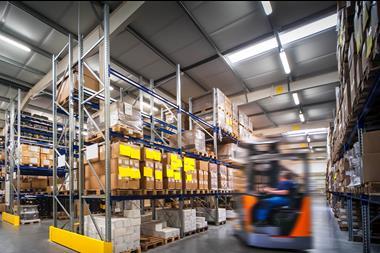Many retailers feel they need more warehouse space, but do they just need savvy alternatives and better warehouse management instead? Following the launch of its Supply Chain 2022 report with Retail Week, Bis Henderson Consulting’s Louisa Hosegood looks at why retailers need to shift their supply chain thinking to what the consumer wants.
Recent events have exposed the vulnerabilities of ultra-lean, just-in-time supply chains, so businesses are increasing safety stocks.
Consumer demands for ever-greater choice and availability require more SKUs to be held in more locations while demand is increasingly fragmented and volatile.
Ecommerce is notoriously hungry for warehouse space, but more traditional channels still have to be supported.
The warehouse is no longer just a storage space but a production operation where orders are picked and packed, goods are personalised and returns are processed. Of course, businesses need more warehouse space – if they can find it in an increasingly tight market.
Or do they? Many firms are enjoying genuine growth in volumes, product range and market geographies. But, for others, it isn’t the business that is growing, it is the nature of the activity that is changing – and that doesn’t always need to be addressed by leasing a bigger shed.
“Try a little thought experiment: walk a notional consumer through your warehousing and distribution operation”
As we sometimes have to remind our clients, a warehouse exists solely to support and enable the company’s offer to its customers. Try a little thought experiment: walk a notional consumer through your warehousing and distribution operation.
What will they see that is going to add value for them, that will make them more inclined to spend money with you? And what will they see that is doubtless very clever, but doesn’t really affect them or just looks like an extra cost?
Only if we understand customer priorities can we look afresh at warehouse requirements.
Location, location, location
Take location, for example. Until recently, the trend was to distribute from relatively large distribution centres (DCs) optimised for the ‘centre of gravity’ of particular markets.
Now many, but not all, businesses are finding that consumer demand for ultra-responsive ecommerce requires stock-holding to be distributed across many more but smaller locations (which could be existing shops).
That could lead to a ‘hub and spoke’ network – it could conceivably involve abandoning the DC entirely.
Thinking about function
Retailers need to think, too, about the functions their warehousing performs.
Is offering a high level of personalisation really giving a competitive edge and is the warehouse the right place to do this?
Similarly, is it sensible to use scarce warehouse space to process returns? Might it be better to route returns and their processing through the physical shop estate or perhaps outsource returns operations?
So do we actually need more space?
Are current warehouse arrangements really at capacity?
The retail warehouse has seen many changes over the years. Physical layout and operational procedures will have evolved piecemeal, using whatever space and equipment were available at the time.
We find that much or all of the perceived need for more space can be met by re-engineering what is already there – changing racking locations, altering pick routines and grouping commonly co-picked stocks.
We can exploit the full height of the building or consider creating a mezzanine floor for ancillary operations, such as returns processing.
Rethinking investment
Automation has often been cited as the answer to space problems, but big solutions usually require big-scale operations and a corresponding big investment.
Nowadays smaller, modular, more specific, more affordable automation and mechanisation solutions are readily available, helping to economise on floor space while improving processes.
Investment in slicker warehouse management, demand planning and order and delivery scheduling can also free space. In addition, we can question whether it really makes business sense to scale warehouse provision around seasonal peak requirements when much of the year a warehouse may be half-empty. In our view, it doesn’t and we can propose alternatives.
At some point, a growing business may need additional warehousing, but retailers can postpone that expensive day by thinking creatively about processes that really deliver value.
At the end of the day, that’s what customers really want.
Learn more about Bis Henderson Consulting at bis-hendersonconsulting.com

Louisa Hosegood FCMA is digital and strategy director at
Bis Henderson Consulting
Previously with John Lewis, Marks & Spencer and Tesco, Louisa Hosegood has extensive experience in shaping supply chain strategy, influencing transformation, driving insight and bringing pragmatism to risk management in fast-paced, demanding retail environments.
Hosegood is passionate about developing supply chains that are fit for the future – commercially sustainable and aligned with business strategy, with an integrated, end-to-end approach.




























